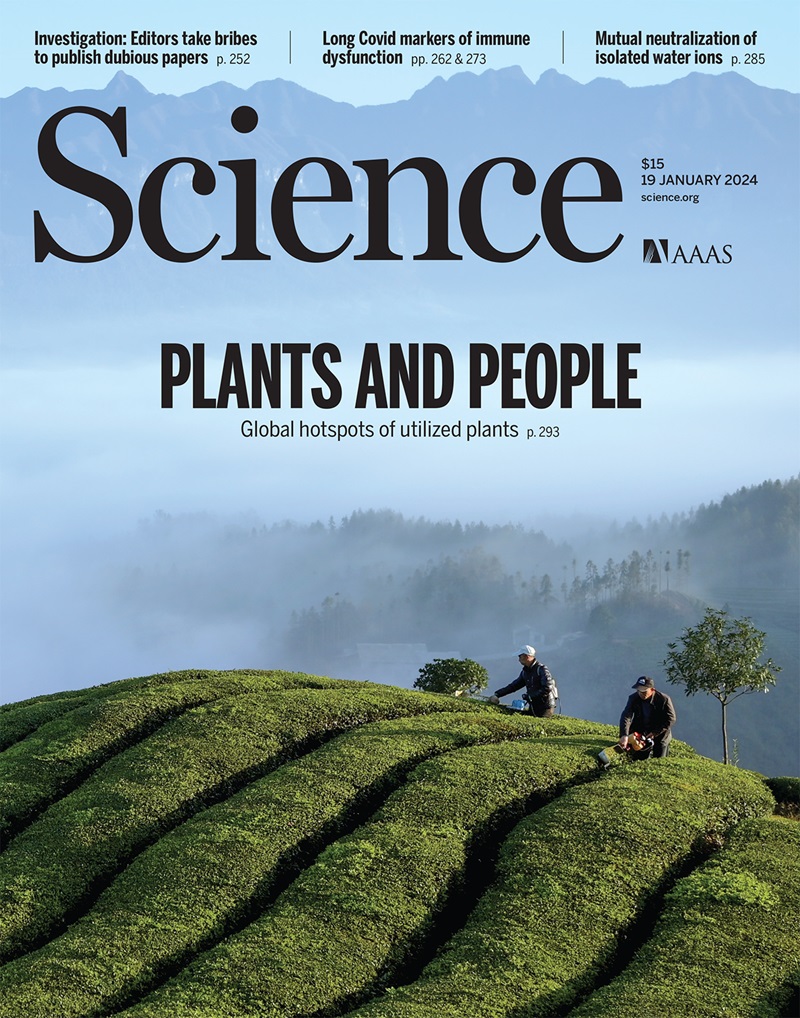肾上腺髓质素诱导的内皮胰岛素抵抗介导肥胖相关性糖尿病
IF 44.7
1区 综合性期刊
Q1 MULTIDISCIPLINARY SCIENCES
引用次数: 0
摘要
胰岛素抵抗是肥胖相关的2型糖尿病的标志。胰岛素的作用不仅局限于代谢细胞,还涉及血管,在血管中,胰岛素增加毛细血管血流量,并增加胰岛素和营养物质的输送。我们发现,在肥胖的人和小鼠中,肾上腺髓质素的血浆水平升高,通过蛋白酪氨酸磷酸酶1b介导的胰岛素受体去磷酸化抑制人内皮细胞中的胰岛素信号传导。在缺乏内皮型肾上腺髓质素受体的肥胖小鼠中,胰岛素诱导的内皮型一氧化氮合酶激活和骨骼肌灌注增加。用肾上腺髓质素治疗小鼠模拟肥胖和诱导内皮和全身胰岛素抵抗的效果。内皮细胞丢失或阻断肾上腺髓质素受体可改善肥胖诱导的胰岛素抵抗。这些发现确定了肥胖诱导的全身性胰岛素抵抗的机制,并提出了治疗肥胖相关的2型糖尿病的方法。本文章由计算机程序翻译,如有差异,请以英文原文为准。
Endothelial insulin resistance induced by adrenomedullin mediates obesity-associated diabetes
Insulin resistance is a hallmark of obesity-associated type 2 diabetes. Insulin’s actions go beyond metabolic cells and also involve blood vessels, where insulin increases capillary blood flow and delivery of insulin and nutrients. We show that adrenomedullin, whose plasma levels are increased in obese humans and mice, inhibited insulin signaling in human endothelial cells through protein-tyrosine phosphatase 1B–mediated dephosphorylation of the insulin receptor. In obese mice lacking the endothelial adrenomedullin receptor, insulin-induced endothelial nitric oxide–synthase activation and skeletal muscle perfusion were increased. Treating mice with adrenomedullin mimicked the effect of obesity and induced endothelial and systemic insulin resistance. Endothelial loss or blockade of the adrenomedullin receptor improved obesity-induced insulin resistance. These findings identify a mechanism underlying obesity-induced systemic insulin resistance and suggest approaches to treat obesity-associated type 2 diabetes.
求助全文
通过发布文献求助,成功后即可免费获取论文全文。
去求助
来源期刊

Science
综合性期刊-综合性期刊
CiteScore
61.10
自引率
0.90%
发文量
0
审稿时长
2.1 months
期刊介绍:
Science is a leading outlet for scientific news, commentary, and cutting-edge research. Through its print and online incarnations, Science reaches an estimated worldwide readership of more than one million. Science’s authorship is global too, and its articles consistently rank among the world's most cited research.
Science serves as a forum for discussion of important issues related to the advancement of science by publishing material on which a consensus has been reached as well as including the presentation of minority or conflicting points of view. Accordingly, all articles published in Science—including editorials, news and comment, and book reviews—are signed and reflect the individual views of the authors and not official points of view adopted by AAAS or the institutions with which the authors are affiliated.
Science seeks to publish those papers that are most influential in their fields or across fields and that will significantly advance scientific understanding. Selected papers should present novel and broadly important data, syntheses, or concepts. They should merit recognition by the wider scientific community and general public provided by publication in Science, beyond that provided by specialty journals. Science welcomes submissions from all fields of science and from any source. The editors are committed to the prompt evaluation and publication of submitted papers while upholding high standards that support reproducibility of published research. Science is published weekly; selected papers are published online ahead of print.
 求助内容:
求助内容: 应助结果提醒方式:
应助结果提醒方式:


